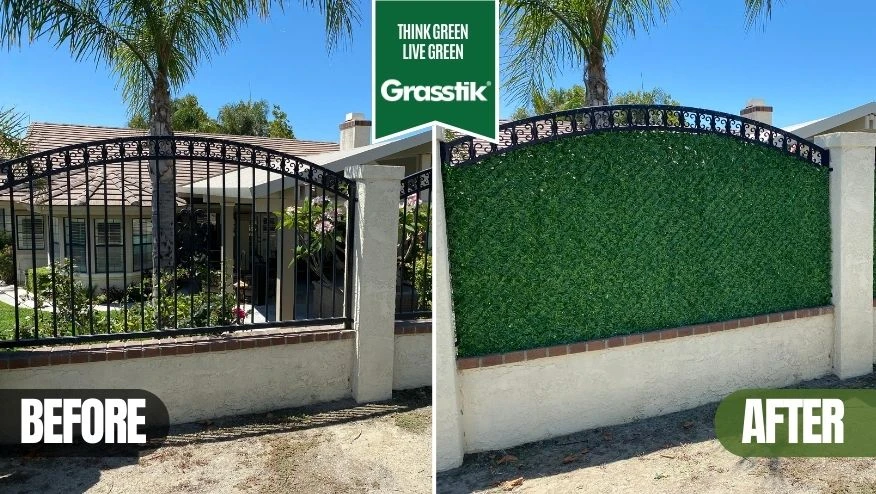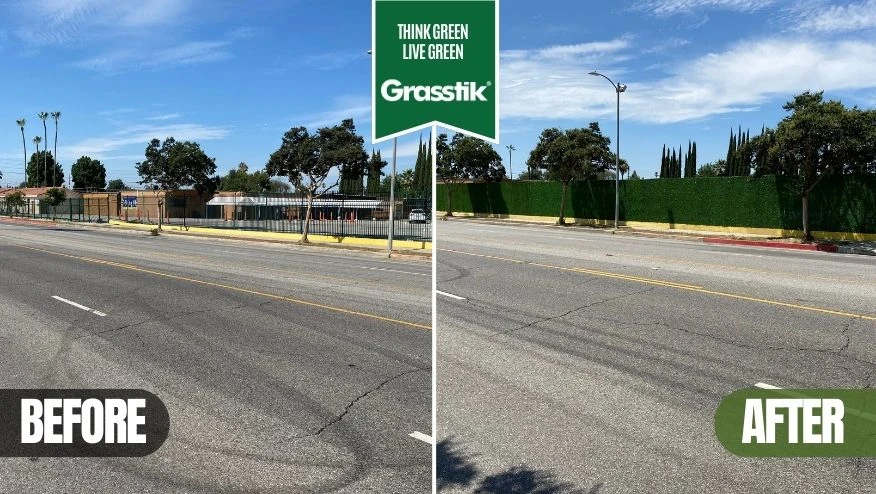
A highway fence is a barrier constructed alongside roads, usually made from materials such as metal, wood, plastic, concrete, or brick. These fences come in various designs, each tailored to a specific purpose.
Highway fencing is crucial for several reasons. Firstly, they are built to help reduce noise from busy highways, enhancing the quality of life for nearby residents. Fences also improve the safety and efficiency of roadways by aiding in traffic management, environmental protection, accident prevention, and other functions.
What Are the Advantages of Using Highway Fence?
Noise Reduction
Some highway fences are designed to reduce noise for local residents and nearby buildings.
Safety of Drivers and Passersby
Fences prevent accidents by keeping pedestrians from crossing highways at unsafe locations. They also absorb impact and redirect vehicles back onto the roadway, reducing the severity of accidents.
Animal Protection
Highway fences keep animals off the roads, making the roads safer for drivers and protecting animals from traffic hazards.
Environmental Protection
Fences help control soil erosion by acting as barriers against wind and water runoff, preserving the surrounding environment.
Heat Reduction
Freeway Fences can act as sun shades, keeping the road surface cooler and reducing the overall temperature of the roadway.
Road Structure Protection
Fences prevent the disruption of roads caused by water, snow, and wind, helping to maintain optimal road conditions.
Reduced Driver Distraction
Highway fences create safer roads by shielding drivers from pedestrian walkways and animals, thus reducing distractions.
Wind Reduction
Freeway Fencing absorbs wind, reducing its disruptive effects on the roadway.
Why Do Freeways Have Fences?
In the USA, it's common to see highways lined with fences along the way. While these fences may vary in appearance, the question remains: why do freeways have fences exactly? There are several reasons, and the type of fence used often depends on the specific needs of different areas.
Some fences are installed to act as a barrier, reducing noise from the roads for nearby residents.
Others serve to enhance safety by keeping pedestrians away from traffic and by deflecting or catching out-of-control vehicles, preventing them from crossing into oncoming traffic.
There are fences that help maintain the high condition of the road by keeping debris and vegetation clear.
Roadside fences also could serve as a deterrent against vandalism and unauthorized crossings on major roads.
Moreover, they can mark the legal boundaries of the rights-of-way of highways designated as "limited access."
Freeway fences come in various styles and materials, but Grasstik offers solutions that can meet all of these requirements. Visit our page to learn more about how roadside fence can address your needs.
What Is Fencing Beside Freeway Exits For?
Safety
It keeps pedestrians and vehicles safe by guiding them to the right exit and preventing accidents.
Traffic Control
Fencing helps manage traffic flow, making sure vehicles enter and exit the freeway safely.
Property Protection
These fences mark where the freeway ends and private property begins, keeping trespassers out.
Wildlife Protection
They stop animals from getting onto the freeway, reducing the risk of accidents.
How Do Highway Fences Improve Highway Safety?
Highway fences provide safety for people both on and off the road. They ensure that pedestrians do not unexpectedly walk onto the road and that vehicles stay on their designated path, minimizing the risk of accidents. Moreover, freeway clear fence prevent animals and rocks from falling onto the road. Many local regulations mandate the installation of highway fences due to high traffic volume and a high accident rate.
Preventing Animal Crossings
Fences can reduce collisions between vehicles and large animals by 80–99%. However, gaps in fencing at intersections, on-ramps, and off-ramps can allow small animals to access the highway. Therefore, if there are multiple occasions with this, it is recommended to consider installing a fence cover or explore alternatives such as the Grasstik artificial grass grass fence.
Decrease in Accident Rates
The presence of fences can help reduce the likelihood of certain types of accidents, such as collisions with fixed objects or rollovers. Moreover, accidents on highways without fences are more common due to the lack of physical barriers to prevent vehicles from crossing over to the opposite side, or running off the road.
How Durable Are Highway Fences and What Kind of Maintenance Is Required?
Highway fences are typically durable, but their strength varies depending on the material used. The most used options are concrete and metal fences.
Concrete highway fences are the most robust you can find, capable of withstanding significant pressure, offering high security and privacy value, and requiring minimal maintenance. Metal fences may not stop a car, but they are cost-effective, difficult to bypass, provide visibility, and are easy to maintain, making them a popular option for road fences.
To keep the fence in good shape, conduct regular inspections, regardless of the material used. Keeping an eye out for any damage or defects and promptly fixing them will ensure the fence lasts longer and remains effective.
Regular cleaning is also crucial. With the constant flow of traffic, debris, dirt, and even vegetation can gather along the fence and nearby road. Try to keep the area clean to maintain the fence's integrity. Moreover, in regions experiencing winter weather, it's necessary to regularly clear away snow and ice buildup.
For metal fences, especially those situated in harsh environments, occasional touch-ups such as applying paint or corrosion-resistant coatings are necessary to prevent rust and deterioration.
How to Install a Highway Fence?
Firstly, start with thorough planning. Consider the purpose of the fence, the specific area where it will be installed, and potential obstacles like trees, rocks, rivers, and uneven ground. Also, decide on your budget beforehand and the type of fence you’ll use. Then, check local regulations regarding fence features such as height, materials, and distance from the highway.
Once the planning is done, prepare the installation area. Clear away grass, trees, debris, or any other obstructions. Create a clear layout for where the fence will go, ensuring you include exits along its length for emergency situations and access by maintenance staff.
Next comes the installation phase. You can either do this yourself or hire a professional installation company or team.
What Is the Installation Process of Highway Fence?
- Use a post-hole digger to create holes for the posts.
- Place the posts in the holes and fill them with concrete mix.
- Let the concrete set for at least 24-48 hours before attaching the fencing material.
- Attach fence material:
If using concrete barriers or chain-link fences that require a top rail, install it to connect the posts or supports.
For wire mesh fences, unroll the mesh and attach it to the posts or supports using appropriate fasteners.
For plastic and PVC fences, secure the panels or sections to the posts with screws or clips.
And for steel or aluminum guardrails, attach the railing sections securely to the support posts. - Ensure all posts and the fence are stable and properly secured.
- If your fence design includes gates, install them according to the manufacturer’s instructions.
What Are the Important Points to Consider Before Installing the Highway Fence?
There are numerous local and state regulations that must be carefully followed. If we are talking about the USA highway fences, you would likely need a permit from the state Department of Transportation. Also, contact local utility companies before digging any holes for the poles to avoid damaging underground lines.
And, of course, prioritize safety for yourself and your team. Always wear appropriate protective gear when handling tools and materials.
What Are the Types of Highway Fences?
Concrete Barriers
These are robust and durable, providing strong protection against vehicle collisions. They are often used in medians( the area between opposing lanes of traffic) and around construction zones.
Metal Fences
These include chain-link fences and wire mesh fences. They are versatile and can be used for general "highway needs" and security purposes.
Plastic and PVC Fences
Used as a temporary solution, around construction sites or for crowd control during events. They are lightweight and easy to install and remove.
Steel or aluminum guardrails
Used in medians, roadsides, and on bridges for road safety, these guardrails serve different purposes but are primarily designed to prevent vehicles, including motorcycles, from crossing into oncoming traffic
Grasstik Privacy fence
Grasstik offers highly aesthetic solutions that provide privacy and security:
- Grass Fence Roll: This versatile option can be installed on various types of fences, including chain-link, wood, vinyl, wrought iron, and concrete walls, or even between two posts. It allows you to easily create a private area, shielding your home from busy, polluted roads. It's also an excellent choice for adding fencing along freeways for safety and noise reduction.
- Grass Fence Panels: These lightweight, aesthetically pleasing panels are an ideal solution for any temporary privacy needs. They are easy to clean, reusable, and straightforward to install.
How Do Highway Fences Affect the Environment?
Highway fences play a crucial role in environmental improvement by controlling soil erosion and preventing flooding. More importantly, they create barriers that deter animals from accessing roads, thereby reducing the risk of collisions between vehicles and wildlife. This helps prevent animal fatalities by 50% that occur when animals wander onto busy roads. Sometimes, wildlife corridors are constructed to guide animals to safer crossing points under or over highways without disturbing the local fauna's ecosystem.




